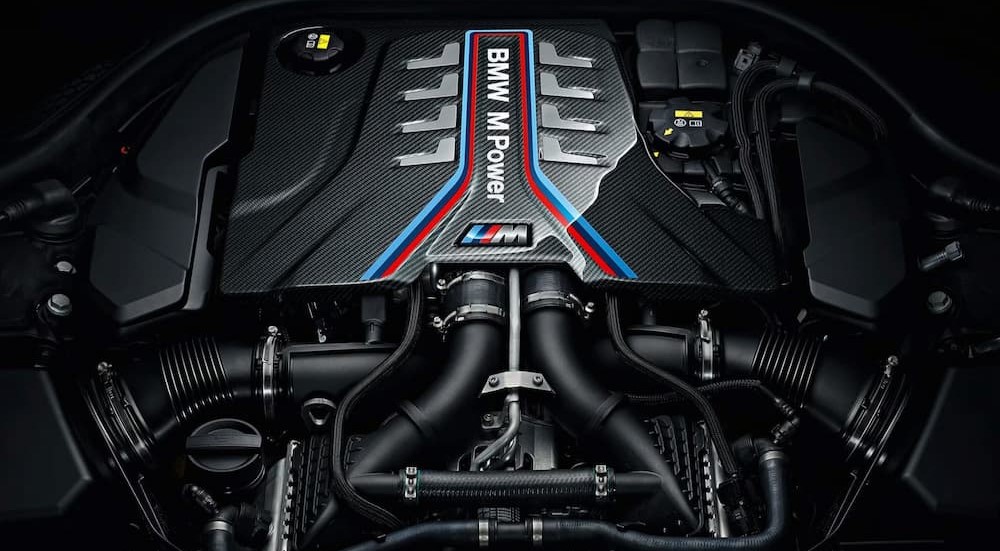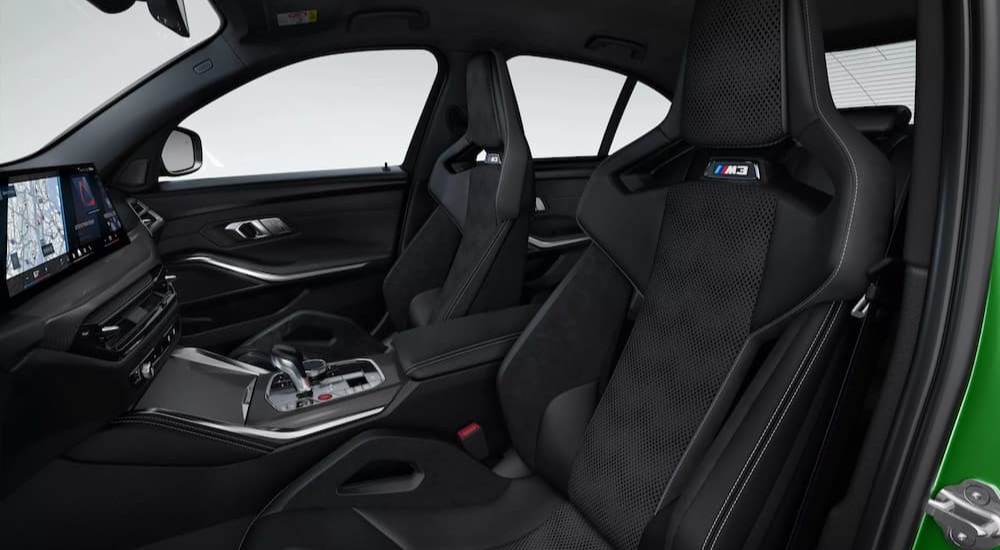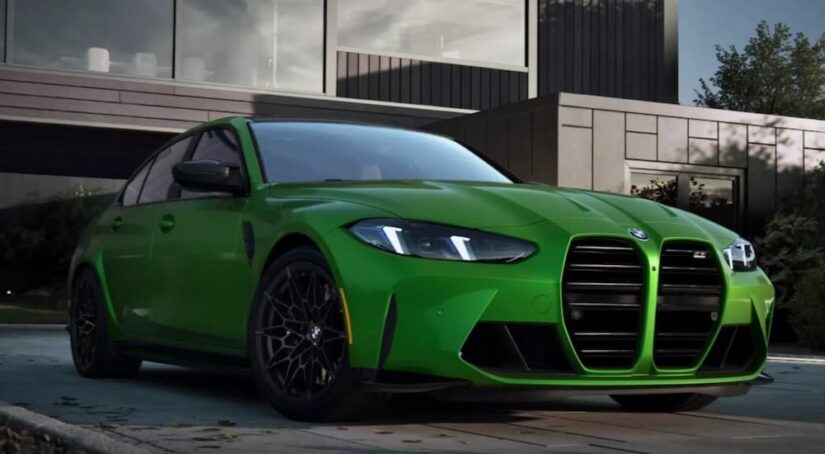If you’re looking for an entry-level luxury compact sport sedan, you probably know that not many models tick all of the boxes. Plenty of luxury models prioritize comfort at the expense of athleticism or do both well but have a sky-high price tag that’s far beyond the reach of most drivers. But if you can find a BMW 3 Series for sale near you, then you’ve got a shot at getting all of your top priorities taken care of. This model has been the top contender in its field for a while now, and for good reason.
But deciding on a 3 Series isn’t the end of the road. You still need to pick the variant that best meets your needs and your budget. So, let’s take a look at the options available on the 2025 model and what each one brings to the table. By the time you’ve finished this guide, you should have a good idea of which one is right for you.
Powertrains
There are two different engines available for the 3 Series. The base option is a 2.0L turbocharged inline four-cylinder engine that produces 255 hp and 295 lb-ft of torque. Paired with all-wheel drive, it gets an estimated 29 MPG combined while opting for rear-wheel drive boosts that figure to 31 MPG combined. That makes this the more fuel-efficient option, perfect for drivers who want to go as far as possible on a gallon of gas. Since the 3 Series has a comfortable ride and can easily serve as a commuter car, that’s worth keeping in mind.
But if you’re more focused on the “sport” part of “luxury sport sedan,” then you may want to consider upgrading to the available 3.0L turbocharged inline six-cylinder engine. Interestingly, this engine delivers the same 29 MPG combined fuel economy rating when paired with all-wheel drive (though it does take a 1 MPG hit for highway driving compared to the I-4). But opt for rear-wheel drive, and you’ll still get a rating of 29 MPG combined instead of the more significant improvement you get with the I-4. Accept that lower fuel economy rating, and you’ll be rewarded with an engine that has been re-tuned for the 2025 model year to deliver more power than it used to, now churning out 386 hp and 398 lb-ft of torque, giving you a lot more oomph for your joy rides.
Both powertrains use a 48-volt mild hybrid system that helps them deliver the balance they strike between power and fuel economy. The electric boost helps them reach peak power at lower RPM and deliver a smoother ride. Another thing both options have in common is that they pair exclusively with an eight-speed automatic transmission. If you want the extra control a manual offers, you’ll need to upgrade to the sportier (and pricier) M3, which we won’t be covering in-depth in this guide.

Drivetrains
As we’ve already referenced, there are also two drivetrains to choose from. Rear-wheel drive is both more affordable and more fuel efficient, but it does slow the car down slightly. We do mean slightly: with the base engine, RWD models go from 0-60 mph in 5.6 seconds, while AWD models clock in at 5.4 seconds. Upgrade to the I-6, and RWD has a 0-60 time of 4.4 seconds compared to AWD’s 4.1 seconds. But these fractions of seconds do matter to serious enthusiasts who are looking for powerful acceleration, so it’s certainly worth noting.
Of course, BMW’s xDrive AWD system also provides the same safety benefits that it offers on non-sporty cars. You’ll get better traction on wet roads and loose surfaces in addition to better grip for cornering. While fuel economy is affected, it’s not as dramatic as it would be with a full-time AWD system because BMW uses an intelligent system that can distribute torque among the wheels differently in response to changing road conditions. You get the traction when you need it, but don’t burn extra fuel when you don’t.
Trims
Put the engine options and the drivetrains into a Punnett square, and you’ll be looking at the four trim levels of the 3 Series. The most affordable combination, with a starting MSRP of $45,500, is the 330i, which pairs the I-4 engine with RWD. While this is the least powerful model, it’s also the most fuel-efficient and has the most range, able to go an estimated 484 miles on a tank of gas, while the other three can only manage 452 miles. And keep in mind that it’s still a sporty car with plenty of power and a nimble ride. Stick with the base engine, but opt for AWD, and you’ll have the 330i xDrive, which starts at $47,500.
BMW fans will know that the letter M (for motorsports) at the start of a model name indicates a higher standard of performance, and the 3 Series is no exception to this rule. The M340i pairs the I-6 engine with RWD and starts at $59,600, while the M340i xDrive pairs the I-6 with AWD and starts at $61,600. In addition to a more powerful engine, the M340i models also have a specially-tuned sport suspension and unique styling touches, among other features. However, you can add many of these features to the 330i with the M Sport package, which raises the price by $2,550 and gets you just about everything but the I-6 engine, making it a good compromise between M and non-M models.

Comfort & Convenience Features
Before we wrap up, let’s turn our attention to the interior amenities of the 3 Series. These features don’t vary so much from trim to trim but rather come standard across the lineup or can be added on with packages or à la carte. Every model comes standard with a curved screen that houses both a 12.3-inch digital gauge display and a 14.9-inch touchscreen that controls the infotainment system. That system gets an upgrade for the 2025 model year, now running on iDrive 8.5, which has a simpler climate control menu that’s easier to use. Wireless Apple CarPlay and Android Auto come standard, along with wireless charging. While forward-collision warning and automatic emergency braking are standard, other driver assistance features cost extra: $500 for the Driving Assistance Package and $1,700 for the more extensive Driving Assistance Professional Package.
For the 2025 model year, heated seats come standard across the lineup, giving the lower trim levels a boost of luxury. The seats are also comfortable because of their design, which is especially supportive so you can stay secure during sporty driving. The materials are also high-quality throughout, so you don’t have to worry about the trim feeling cheap, even in the entry-level options. For a wider array of features, you can spring for the Premium Package, which adds a heated steering wheel, keyless entry, a power tailgate, remote engine start, and a head-up display.
Which Model Is Right for Me?
While the trim lineup for the 3 Series may not be perfect, it is simple and easy to understand: choose your engine, decide between RWD and AWD, and you’ve got yourself a decision. From there, we encourage you to take a look at the optional packages and add-ons—if you’re going to get a luxury car, you might as well make sure you’re getting everything you want. If none of the options we’ve looked at here feels quite right, BMW’s naming system is similarly straightforward: you can turn to the 2 Series for something a little smaller or the 5 Series for something a little bigger. And you can always check out the M3 if you have money to burn on something with even more power and prowess.



